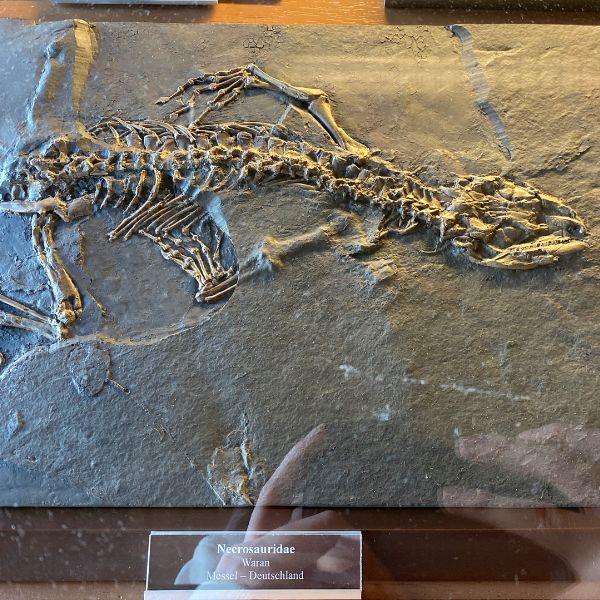Our thank you sale is on now - save 10% off any item, or 15% off two or more!
- Home
- UNESCO Sites in Germany
Discover the best UNESCO World Heritage Sites in Germany.
By: Eran Fulson / Traveler, writer, and curious observer of all things German.
As we’ve covered in Natural Wonders and Famous Architecture, Germany has no shortage of truly amazing natural and man-made landmarks. We’ll back up that claim on this page with some of the best UNESCO World Heritage sites in Germany.
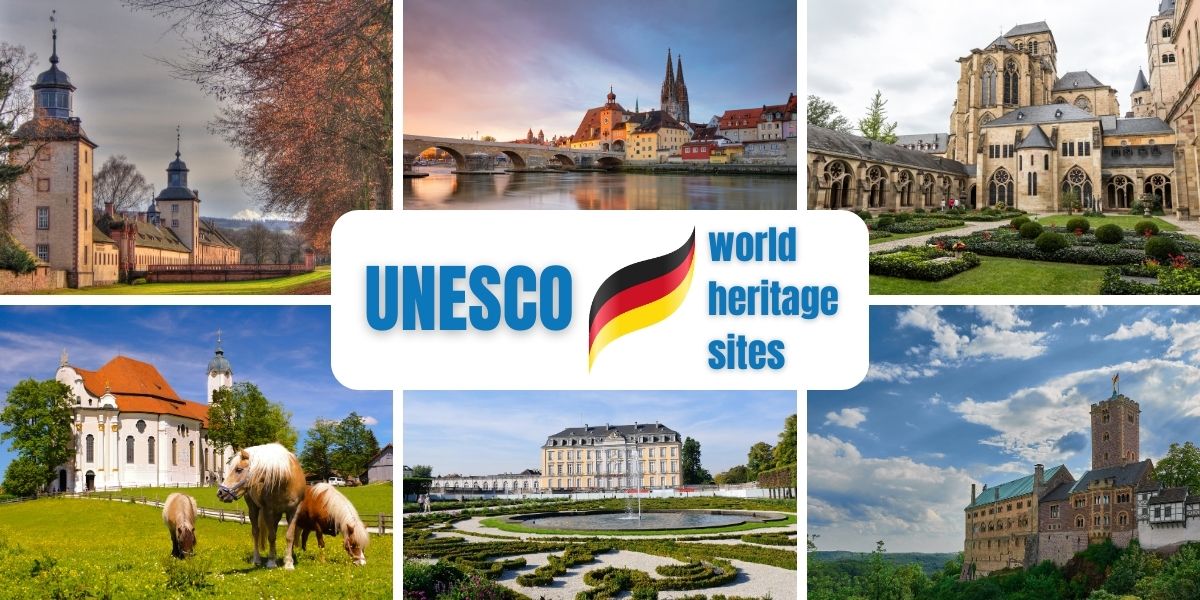
While almost every country in the world has at least one site on the list, Germany boasts the third-most UNESCO sites in the world (52), trailing only Italy (58) and China (56).
The prestigious UNESCO World Heritage List combines sites of cultural heritage and historical significance.
Practically speaking, it’s a great way to make a bucket list of places to visit.
On this page:
Trendsetter
When it comes to reflective contemplation, Aachen Cathedral feels poignantly self-fulfilling while situated on the remains of an ancient Roman thermal complex.
Though perhaps not what Charlemagne intended when he ordered its construction in 793 AD. What is certainly known is that the former emperor had a deep appreciation for Aachen as his favorite retreat in Western Germany.
While he died before its completion in 814, the cathedral’s Carolingian architecture and cultural importance made it the first site in Germany to make it onto the UNESCO World Heritage List in 1978.
One of the few architectural landmarks in Germany to be spared during WWII, it also boasts an extensive collection of medieval art from the Late Classical, Ottoman, and Staufian periods. Among the included relics are the supposed swaddling clothes of Jesus.
More than thirty Roman-German kings were crowned in the Aachen Cathedral among its 26,000 square feet of marble paneling and another 26,000 square feet of mosaic decorated throughout.
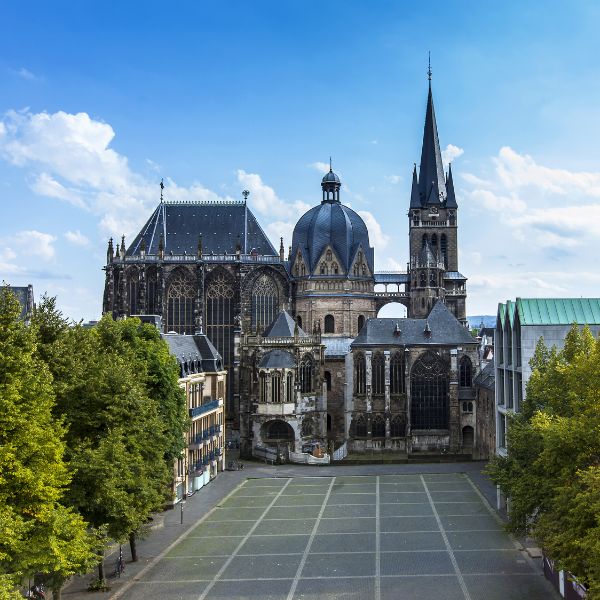
Waiting Game
The cornerstone of the Cologne Cathedral was laid nearly 800 years ago. While they may have had lofty ambitions back then, surely they couldn’t have imagined that A) it would take 632 years to finish, and B) it would still be standing as the tallest twin-spired church in the world.
Fun Fact
Construction of the cathedral began and finished on August 14th (1248 and 1880).
When finished, it held the title of the tallest building in the world for four years until the Washington Monument in the United States was completed in 1884.
The amazing detail in the masonry of the exterior pales in comparison to the sheer magnificence on the inside. It’s easy to lose oneself in the central nave before exploring the aisles filled with highly ornate decor.
It's without a doubt one of the most beautiful UNESCO sites in Germany.
You’ll want to devote a bit of time to walking around, especially if you want to make your way up to the viewing platform in the South Tower.
While the 533 steps up to the top of its 328-foot-tall perch may sound ominous, the panoramic views over Cologne are certainly worth it.
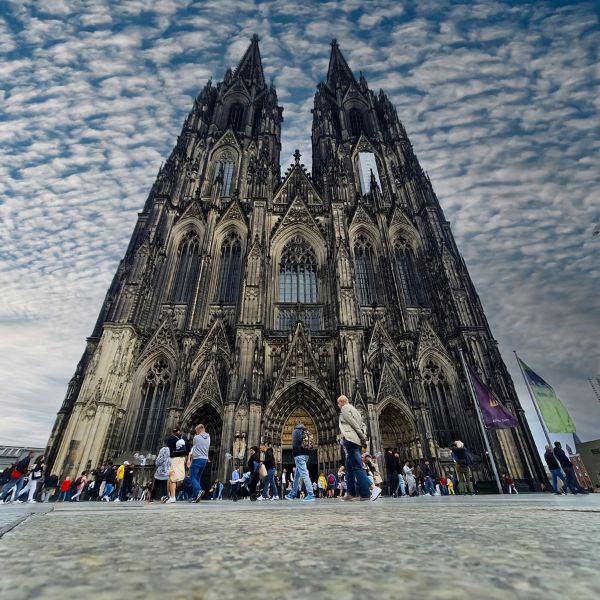
Rome 2.0
Once known as "Second Rome" in the 3rd century, Trier has been a mainstay for cultural heritage from the Roman Empire to its modern iteration.
Several well-preserved Roman structures still stand as a testament to the oldest city in Germany’s early beginnings.
Chief among them, depending on who you ask, is the Cathedral of St. Peter—that’s if you’re taking UNESCO’s opinion into consideration. And who can blame them? The cathedral’s history stretches back 1,700 years and lays claim to being the oldest church in Germany.
Inside the cathedral are the remains of the first basilica and the original Roman walls.
While we haven’t tried it yet, an old tradition is to slide down the old Stone of the Cathedral by the main entrance - a 13-foot pillar that was once one of the former supporting columns. It's better to ask a local first before possibly committing desecration for fun.
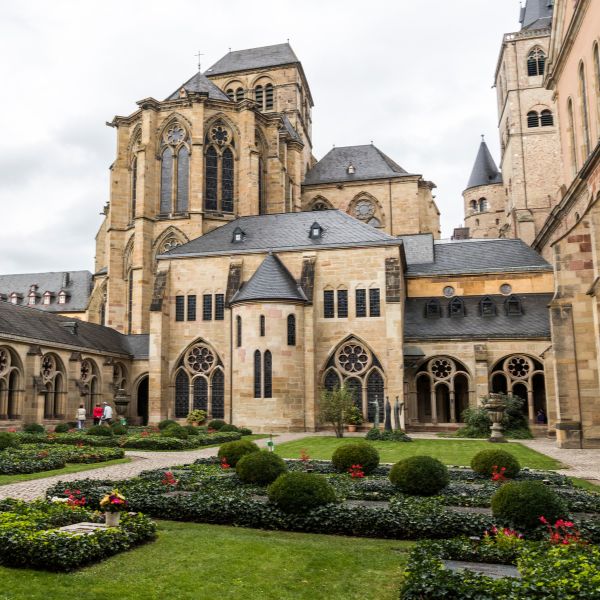
Two’s Company
Maybe it’s something in the air in Lower Saxony, but you don’t often find a cathedral naming two saints in its title.
However, while that’s a new one for me, the Naumburg Cathedral, otherwise known as the Cathedral of St. Peter and St. Paul, stands as a possible outlier among the 42,500 churches in Germany.
Inside the cathedral is one of the earliest, albeit unintended, soundproofed rooms. The Elisabeth Chapel is surrounded by over-engineered walls to support the tower above, which is known as a room of silence.
Its walls are so thick that they create constant climate control, which led to its use as a depot during the post-medieval era.
The 13th-century cathedral also boasts a treasure vault in excess of 3,000 square feet, which is one of the largest Romanesque vaults in central Germany.
Once you’ve had your fill of the interior, the one-acre garden outside of the Cathedral of St. Peter and St. Paul offers a tranquil escape among its old ponds and bastions.
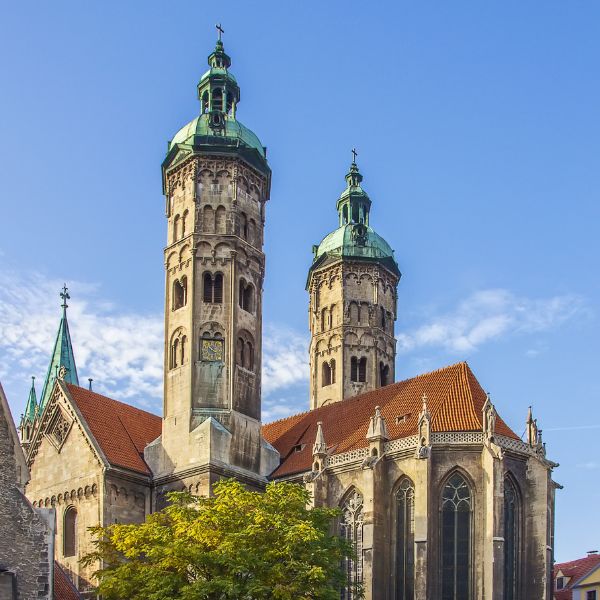
Tearful Beginnings
At first glance, the Wieskirche (Pilgrimage Church of Wies) seems a little out of place. While its setting in the alpine Bavarian countryside is beautifully calming, the church’s physical size exponentially outpaces the local parishioner population.
That’s because the church is a pilgrimage destination (I know, the clue’s in the name...), but finding a true pilgrim site where the local wildlife far exceeds humanity is a rarity.
You have to go back to 1738, when a nondescript wooden figure of Christ was found to be rather tearful. To help protect the site, a wooden chapel was initially constructed to house the miraculous statue.
As its fame grew in the following years, an influx of pilgrims from Germany, Bohemia, Austria, and as far away as Italy led to the need for a larger church to house the masses.
Its completion in 1754 showcased the Bavarian Rococo masterpiece with intricate carvings on the pillars and altar and a magnificent painted ceiling that surely would’ve brought a shade of envy to Michelangelo’s eye.
The church is nearby the town of Füssen, which is an ideal gathering point for excursions to Neuschwanstein Castle and the Zugspitze mountain.
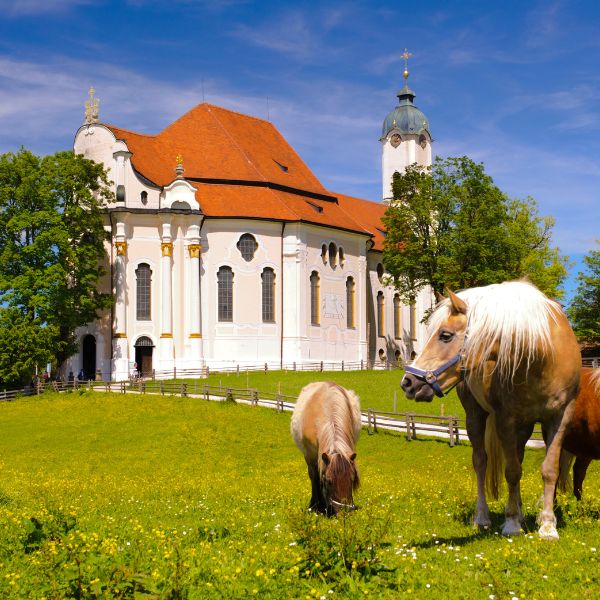
Jurassic Park
While the Messel Pit Fossil Site is a far more subdued version of the iconic 1990s film, it is renowned as one of the most substantial fossil collections of its kind in the world.
The only thing you’ll be running from is an overzealous father with a selfie stick trying to get the right light for a photo. Back to reality, the fossil pit is a decommissioned half-mile-wide strip mine in a former bygone lake from Germany’s fossilized past.
It may not look like a UNSECO-worthy site at first glance, but the 1,000+ species of plants and animals found there would beg to differ.
Although some 20 million metric tons of rock have been removed from over a century of mining, the sheer volume of fossils from this once 2-mile-wide lake is still substantial.
It may not be one of the more visually appealing UNESCO sites in Germany, but it's contribution to science has been immeasurable.
The fossils found here are from the Eocene period and closely resemble many of the animals we have today (i.e., sadly, no dinosaurs, but you can breathe a sigh of relief at the notable lack of velociraptors nipping at your heels).
Marzipan Central
The birthplace of marzipan comes from the little-known (at least outside of Germany) Hanseatic City of Lübeck.
Founded in northern Germany during the 12th century, Lübeck was a principle city among a league of merchant cities that held a monopoly over the Baltic and North Sea trade routes.
Despite suffering damage during WWII, the layout of the Old City, with 15th and 16th century Patrician residences, monuments, churches, and warehouses, remains true to its original form.
As a well-deserved result, three large quarters of Lübeck were added to the UNESCO World Heritage List under the umbrella of Lübeck as a whole.
Through its narrow streets winding along centuries-old storehouses by the water, it’s easy to imagine oneself back at the city’s 14th-century pinnacle.
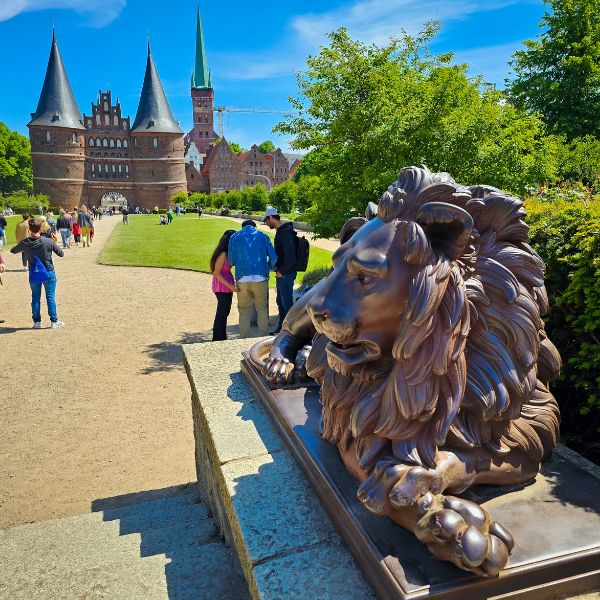
Feeling Monastic
Better displays of archaeological sites are rarer to be found than the former 1,200-year-old Benedictine monastery of Corvey.
Quite literally stepping into a time capsule, this UNESCO World Heritage Site is the oldest and best-preserved display of Carolingian Westwork architecture in the world.
This type of architecture is strongly considered to have set the precedent on which later medieval cathedrals were modeled.
Otherwise known as Civitas Corvey, this monastery played a crucial role in the spread of Christianity in Europe as well as being a center of cultural importance and economic activity.
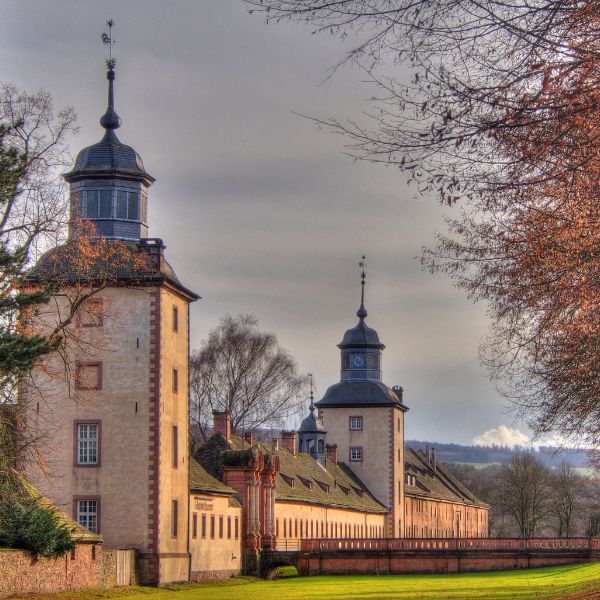
Original Minecraft
Unlike the popular Xbox game, the Mines of Rammelsberg brought a little more excursion jeopardy to the table. Not dissimilar to the current Minecraft obsession, this mining complex was also building a new world.
It’s a bit of a mouthful, so bear with me - the Mines of Rammelsberg lie just south of the historic town of Goslar in the northern German state of Lower Saxony, on the edge of the Harz mountain range. It’s probably easier to use Google Maps instead of memorizing that.
Joining the collective of the Rammelsberg Mines and the town of Goslar on the UNESCO World Heritage List is the Upper Harz Water Management System.
The first prong of this UNESCO trident is the mines. There are signs of ore excavation on site dating back some 3,000 years, with ‘modern’ mining taking place for 1,000 years until the 1980s. Guided tours will take you down into the depths of the mine, where 30 million metric tons of ore were removed.
For an even more unique experience, the Mines of Rammelsberg also feature a Christmas Market both above and below ground.
The second prong is the historic town of Goslar. Like a royal baby, Goslar benefited simply by being around greatness. Due to its location near the mines, the town joined Lübeck and others as part of the Hanseatic League after playing an important role as one of the seats of the Holy Roman Empire.
With more than a millennia of history along its cobbled streets of half-timbered houses, you can still sense the subtlety of what was once known as the Rome of the North.
Completing the cultural trident is the Upper Harz Water Management System. Despite sounding like any other administrative name for a questionably managed government entity, the water system was devised by the local Cistercian monks during the 16th century.
Expansion over the next three centuries led to nearly 200 miles of water transportation ditches and 18 miles of water tunnels. An amazing achievement of early engineering among the UNESCO sites in Germany.
This network of water management systems connected 107 ponds, which helped power the water wheels that powered pumps in the mine, hoisting ore from below, and transporting workers underground.
More than 60 ponds are still in use today for flood protection, drinking water storage, and recreation.
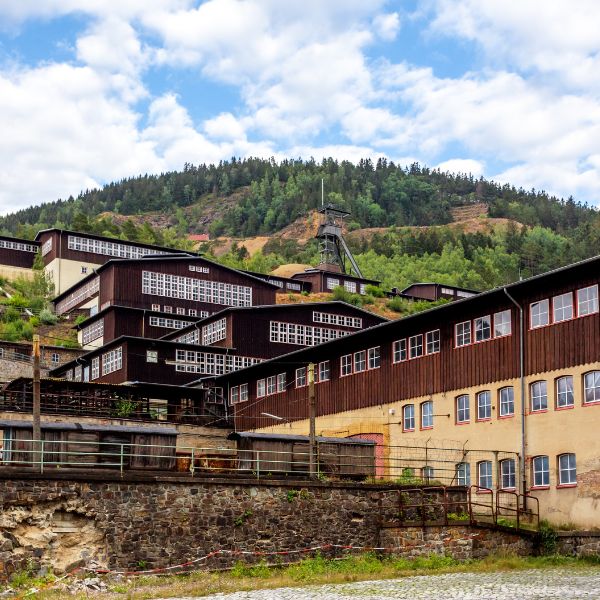
Translation on the Mount
Prior to Y2K (remember that drama?), the UNESCO World Heritage List was busy adding to its selection of cultural sites. Among them was the rather innocuous Wartburg Castle, located in the region of Thuringia.
I say ‘innocuous’ as it blends into its forested surroundings instead of displaying pomp and grandeur like many of its 20,000+ counterparts. One of the main reasons for the inclusion of this nearly 1,000-year-old castle was the crucial role it played in changing the cultural landscape of Germany and beyond.
After Martin Luther was excommunicated in 1521, he was given refuge at Wartburg Castle where he completed his translation of the Bible from ancient Greek into German.
While I’ve undersold the architecture as innocuous, it does stand as one of the best-preserved Gothic-styled castles from the 15th century.
Additionally, UNESCO also recognized Luther memorials in the nearby town of Eisleben, where he would often visit during translation sabbaticals, and the town of Wittenberg, where his translation was published.
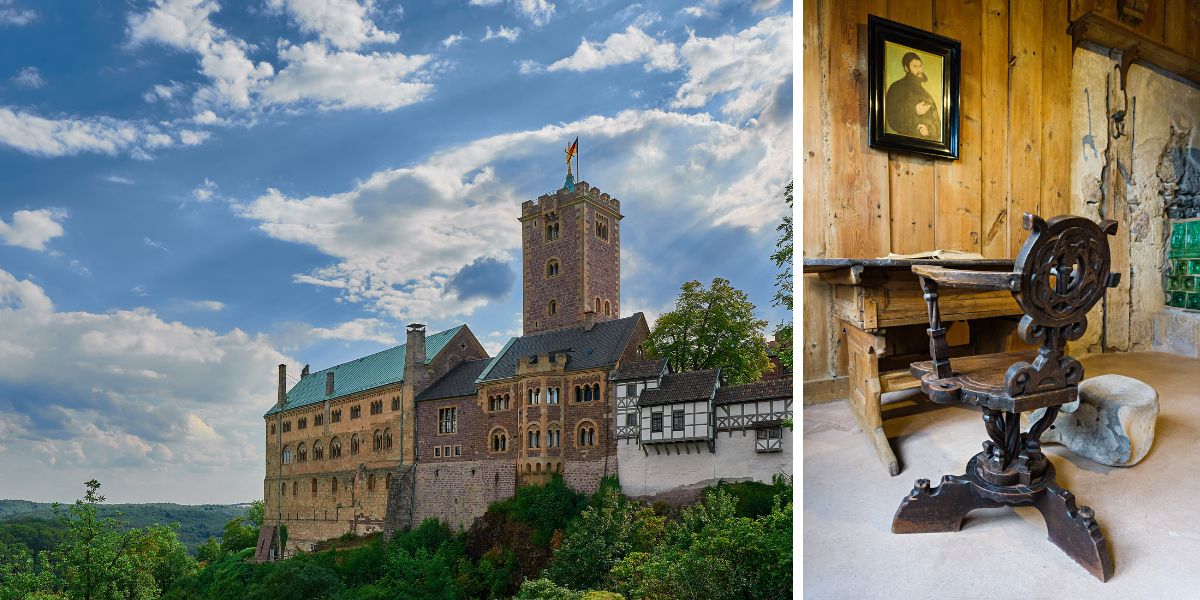 Wartburg Castle and Martin Luther's room
Wartburg Castle and Martin Luther's roomFeeling Parky
The city of Berlin packs an impressive punch when it comes to landmarks, memorials, parks, and all manner of tourist attractions. One can only assume that UNESCO was running out of space on its list when looking at Berlin, effectively adding a collective of sites under the umbrella of "Palaces and Parks of Potsdam and Berlin".
It’s easy to see why when considering the 1,200 acres of parks and 150 buildings included in this conglomerate. The complex of Potsdam’s palaces and parks embraces both natural sites and cultural heritage in a way that few can offer.
There are too many to list, but one of the most eye-catching in this expansive cultural landscape is the Sanssouci Palace. The palace escaped the worst of WWII, what you see today is like a walk back through time.
Sanssouci is one of Germany’s smaller palaces, containing only twelve rooms, it embraces style over substance. Situated over terraced vineyards, the grounds surrounding the palace were intended to convey an intimate closeness to nature.
The UNESCO World Heritage List recognizes Sanssouci Palace and grounds as "an outstanding example of architectural creations and landscaping". It’s worth taking a guided tour around the area, as it is easy to lose oneself (quite literally) among the extensive grounds.
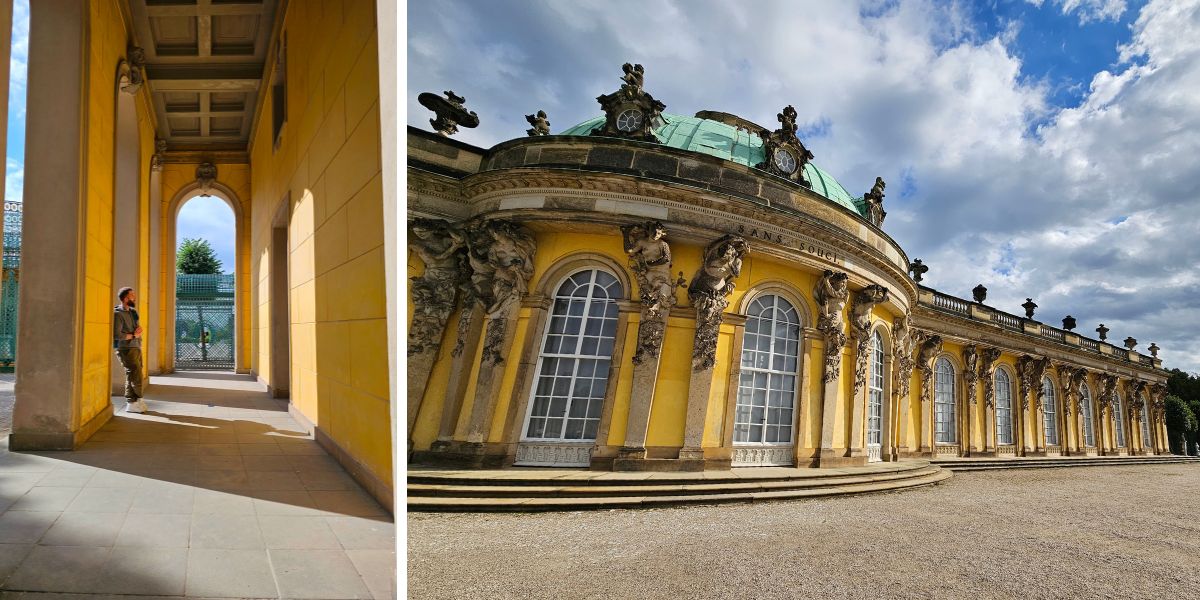 And it was all, yellow.
And it was all, yellow.Millennial Ensemble
Germany is blessed with many well-preserved towns and monuments that date back a millennium or two. Though few of them portray elements of ancient Roman, Gothic, and Romanesque architecture in the way the Bavarian Old Town of Regensburg with Stadtamhof does.
Fun fact
Fun Fact: Of all the cities in Germany, Regensburg has the highest concentration of bars and one of the lowest rates of crime.
A walk through its 2,000-year-old storied streets takes you past Roman fortifications, the unparalleled medieval stained-glass Regensburg Cathedral, and more than 1,500 listed buildings.
Raising the bar even further is the Stone Bridge crossing the Danube River. When completed in 1146, it was widely regarded as the eighth wonder of the world and is the oldest stone-arched bridge in Germany.
Right up there with the likes of Heidelberg, Munich, and Hamburg, you’ll find Regensburg to be among the most beautiful cities in Germany and well worth the visit. The city’s rich cultural heritage and economic virility from centuries past haven’t wavered, and it still finds itself as a prosperous city.
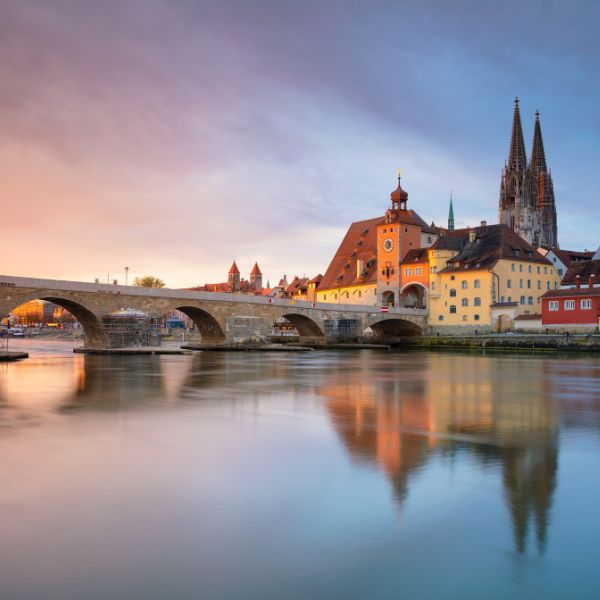
No Q in Lacquer
Starting with a useless fact of the day, ‘lacquer’ is the only word in the English language with a silent ‘q’. Or maybe it’s the "c"...
Either way, the Old Town of Quedlinburg doesn’t shy away from one of the more seldom-used letters in the alphabet. It’s also not shy about the significant role it plays as one of Germany’s true historic towns.
Situated on the Romanesque Route, an architectural tourist route in the Saxony-Anhalt region, Quedlinburg has more than 2,000 half-timbered houses spanning six centuries. The preservation, quality, and sheer number of buildings contribute to the town being an exceptional display of medieval Germany.
After Henry I (876–936) was crowned as the first German king, Quedlinburg became the capital of the East Franconian German Empire.
It’s also home to the Collegiate Church, which was the most highly esteemed in the Empire during the Middle Ages. All of this combined makes the Old Town of Quedlinburg a shoe-in for one of the best UNESCO sites in Germany.
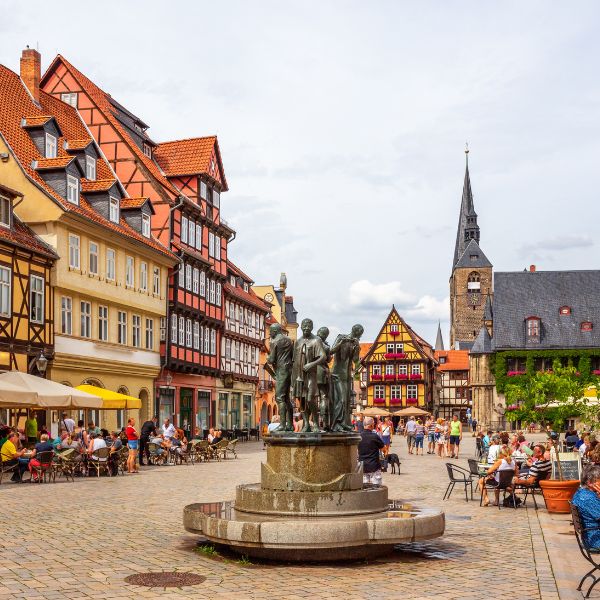
Rococoloco
At first glance, the Castles of Augustusburg may seem like any other palatial complex. However, unlike its overuse of the letter "u", Augustusburg is truly unique by virtue of being one of the earliest and best examples of 18th-century Rococo architecture in Germany.
Its architectural influence served as a model for princely courts for more than a century. Besides the amazing frescoed ceiling of Carlo Carlone, the marbled staircase of Balthasar Neumann has been widely acclaimed as a work of creative genius.
The interior is a mesmerizing stroll through one of Germany’s most symbolic examples of cultural heritage. No expense was spared while it formerly served as an elaborate residence for the prince-archbishops of Cologne.
If you can’t buy your way into heaven, you might as well buy your way into the history books instead.
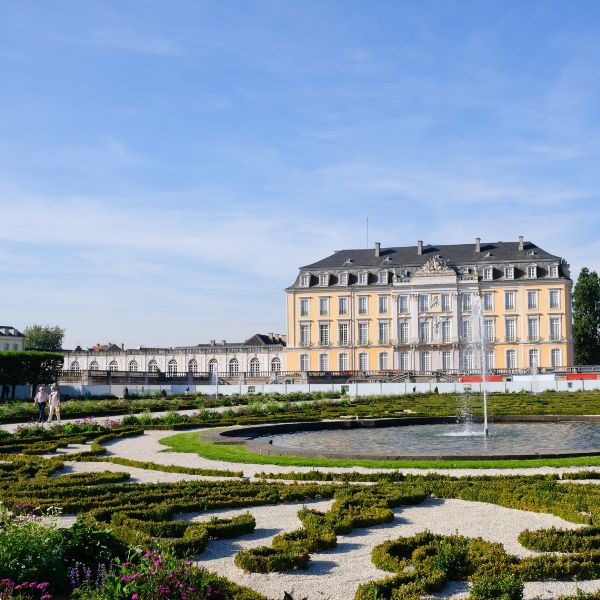
Triple Threat
Who doesn’t love a day by the lake? As it happens, Lake Constance in southern Germany offers more than a day’s worth of things to do. One of Europe’s largest lakes, Lake Constance, is home to three UNESCO World Heritage Sites, among many other cultural highlights.
Of the three, the Monastic Island of Reichenau (Germany) and the Convent of St. Gall (Switzerland) are considered among the cradles of European civilization. Completing the UNESCO trinity are the Prehistoric Pile Dwellings which are dotted around the lake.
Firstly, Reichenau. This monastic complex is made up of three medieval churches: St. Peter and Paul, the Minster of St. Mary and Markus, and the Church of St. George.
Dismiss my earlier remark about the rarity of double-barrelled church names, as that number now reaches a humbling three out of 42,500.
Notably, the wall paintings within the nave of the Church of St. George are the only example of a complete and largely preserved set of pre-1000 A.D. scenic wall paintings north of the Alps—and equally artistically amazing in their own right.
Lastly, and largely hidden from view, the Prehistoric Pile Dwellings would have been quite the site in their prime. Finding the aquatic ground easier to sink piles into versus digging up the rocky terrain led to numerous dwellings along the shoreline of Lake Constance. There are numerous sites devoted to their study and preservation, the notable German site can be found here.
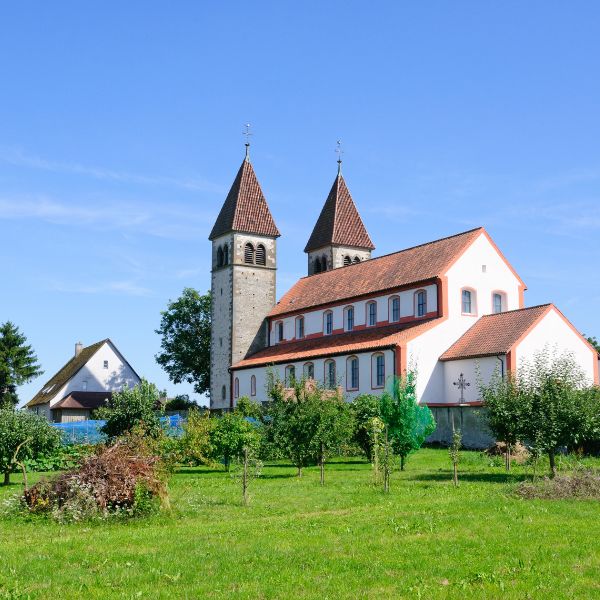
Spatial Palatial
The vast majority of castles and palaces dotted around Germany have a particular point in common, the end result is a culmination of generational expansion throughout centuries of varied ownership.
Where the Würzburg Residence stands in relative solitude is its construction, which equally stands alone in elegance and largely took place over a single generation.
The court architect, Balthasar Neumann (of Augustusburg staircase fame), drew inspiration from Vienna, Paris, and Venice for his magnificent Baroque palace. One of the largest palaces in Germany, it’s subjectively among the most beautiful as well.
Its architecture was completed within 24 years, although its interior took another 30 years before official completion. Its 25-year-long landscaped gardens are also included along with the palace on the UNESCO World Heritage List.
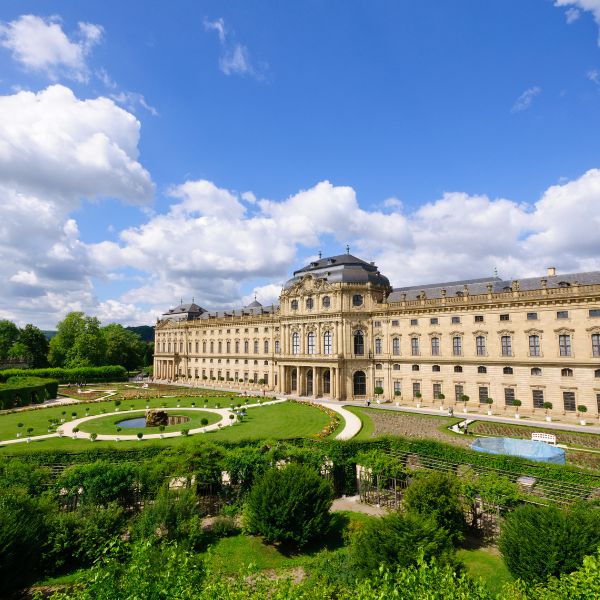
The Dawn Before Time
Given that I can hardly remember what I did yesterday evening without looking for the trail of destruction my resident toddler left behind, I applaud those who study humanity’s day-to-day from thousands of years ago.
Whatever your stance when it comes to chronological dating, there’s no denying the authenticity of artifacts from long-forgotten cultures. One notable area in southern Germany where the first ‘modern’ European settlers set up camp is the Swabian Jura.
It is here that a high concentration of carved figurines, musical instruments, jewelry, and ice age art were found in a series of caves in the 1860s. Decades of further exploration and research would lead to the Swabian Jura being one of the most significant archaeological sites found worldwide.
As such, it should come as no surprise that UNESCO dubbed the site one for its prestigious list. The Museum of Prehistory Blaubeuren is located in the heart of this World Heritage Site.
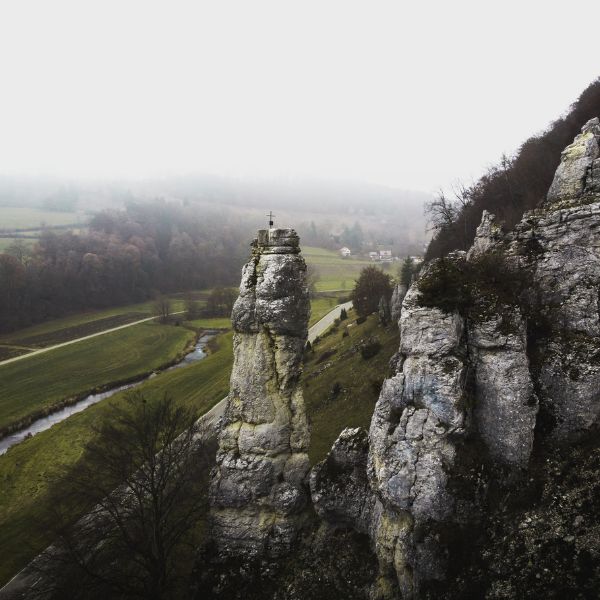
Notable Mentions
- Kontorhaus District is a warehouse district in Hamburg built on a series of narrow islands in the Elbe River.
- Museum Island is a museum complex on an island along the river Spree in Berlin that comprises five museums and the Berlin Cathedral. We've also covered it here.
- The Danube Limes are a 370-mile-long former Roman border along the Danube River. Sites of numerous watchtowers, legion camps, and forts dot the region, which stretches from Bavaria to Austria, Slovakia, Hungary, Croatia, Serbia, Bulgaria, and Romania. Read more here.
- Though the Zollverein Coal Mine Industrial Complex may sound dull, this former mining complex has been completely transformed into a playground of shopping, dining, and a theme park. Designed in the modern Bauhaus architectural style, it’s a unique experience far from whatever first came to mind. Plan your trip here.
- The Archaeological Border Complex of Hedeby and the Danevirke is a former influential trading town. These days, it's an archaeological site renowned for its depth of knowledge pertaining to Europe during the Viking age. Learn more here.
- Near the border of France in western Germany are the Völklingen Ironworks. Standing as the world’s only fully preserved 18th-century ironworks left exactly as it was when it closed in the 1980s. The site regularly holds exhibitions, concerts, and cinema events throughout the year. You'll need to see it to believe it - check it out here.
- The Berlin Modernism Housing Estates are an architectural concept born from the mind of Walter Gropius that led to the development of six housing estates in Berlin during the early 1900s. These designs and construction methods altered the future of modern buildings over the next hundred years. We've previously written about it here.
- Primeval Beech Forests of the Carpathians / Ancient Beech Forests of Germany are a bit of a mouthful, but that’s because this is not wholly exclusive to Germany. This transnational UNESCO World Heritage List inclusion involves 94 areas in 18 countries. The protected area covers nearly 250,000 acres throughout Europe, with Germany accounting for 26% of the total distribution of European Beech.
- Over 2.8 million acres of the Wadden Sea make up the world’s largest unbroken system of intertidal salt marshes, sand dunes, and mud flats. It’s a birdwatcher's heaven. Find out more here.
This Is Not Goodbye...
...there's still more to discover with another 20+ UNESCO sites in Germany on the World Heritage List. Where will you go next?



